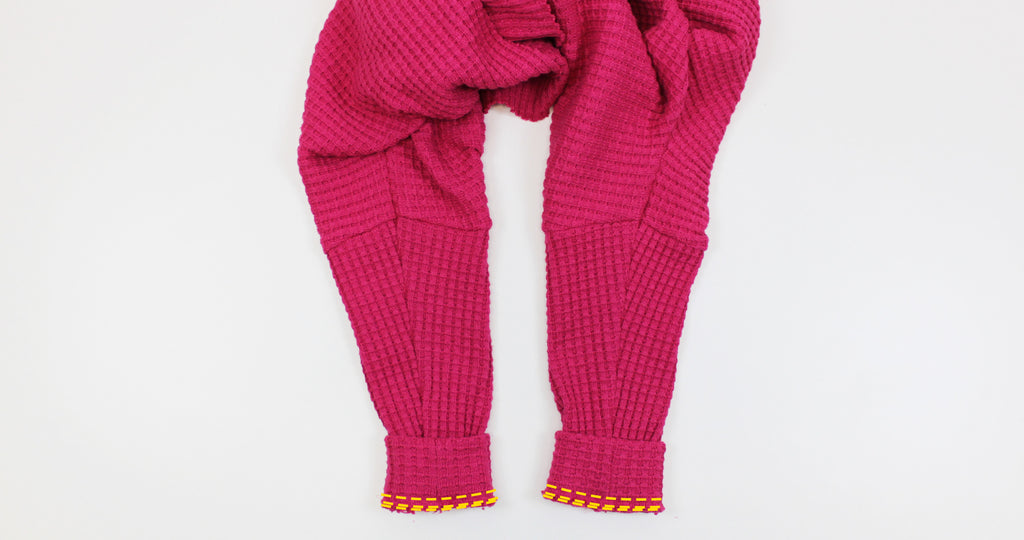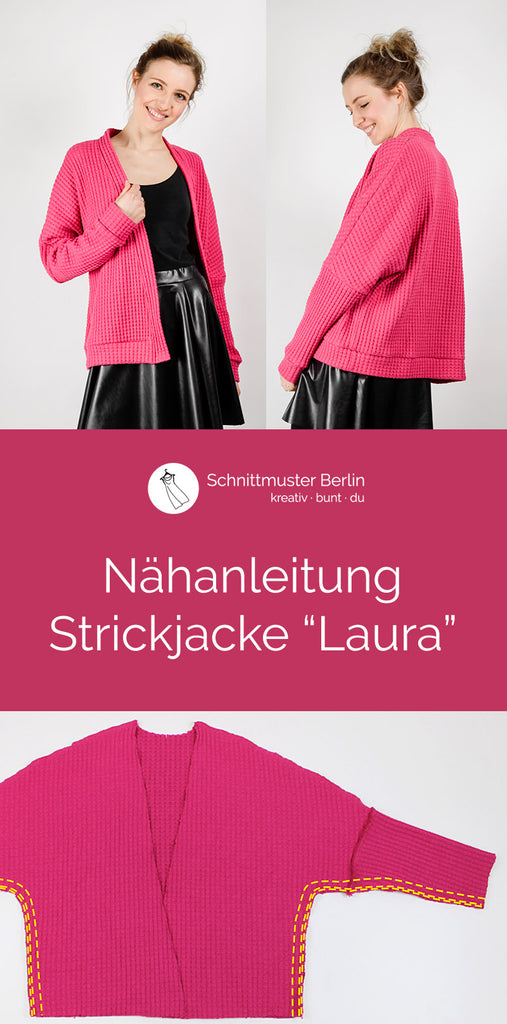cutting:
Cut out the pattern pieces from your outer fabric. Lay the fabric right side up. Lay the selvedges parallel to the middle so that you can lay the back part and waistband in the fold. The pattern pieces should all be face up. Always align the grain arrow on all pieces in the same direction and parallel to the selvedge of the fabric. Transfer all the notches from the pattern through a 3mm long incision with scissors or chalk. Pinch the seam allowance in the fold of the fabric because this is always a center. Markings define positions of dart ends, pocket positions, and much more. Transfer these either with chalk or pins.



You need from fabric:
- 1x back part in break
- 1x waistband-back break
- 2x waistband front opposite
- 2x front part in opposite directions
- 2x aperture opposite
- 2x sleeves in opposite directions
- 2x cuffs
Sewing instructions:
To sew this jacket you need a sewing machine and an overlock sewing machine, alternatively you can use the zigzag stitch on your sewing machine to finish the raw edges.
Be sure to use a jersey needle and use a stretch stitch, i.e. if you are sewing with a home sewing machine you should use either a zigzag stitch or the tripartite elastic stitch and then all seam allowances again with a zigzag stitch or another appropriate stitch neaten so they don't fray. In addition to the description, the colorful lines in the pictures show you where a seam needs to be sewn or something to be glued.
When sewing, pay attention to the seam allowance included in the pattern. Seam allowances that are not specially marked are 1 cm wide!
Happy sewing!

We start with the back piece and the two front pieces. Place the front pieces right sides together on the back piece and sew the shoulder seams on both sides. The seam allowances are neatened together and then ironed to the back.

Then the seam is unfolded so that you can sew on the sleeves while they are open. The sleeves are placed right sides together at the armhole and sewn together. Here, too, the seam allowances are neatened together and ironed upwards to the front or back part.

You close the inner arm and side seams in one go. To do this, place the front piece right sides together on the back piece and fold the sleeves together so that they are also right sides together. Pin the side seam and the inner arm seam and sew them together in one go. The seam allowances are neatened together and ironed to the back.

Now we come to the sleeve cuffs. These are prepared by ironing in the break. Then unfold the fold again and place the cuffs right sides together and close the cuff seam. The seam allowances are ironed apart.

The cuff is turned inside out so that the right side is facing outwards and the inner and outer parts are congruent. Finally, we recommend that you sew an auxiliary seam (approx. 0.5 cm wide), this prevents additional stretching, especially with knitted fabrics, and does not allow the cuff to slip when sewing on the sleeve.

Now you can sew the cuffs right sides together onto the finished sleeves. The cuff is tucked into the sleeve for this. Make sure that the seam of the cuff and the sleeve seam are aligned. The seam allowances are overcast together and ironed into the sleeves.

Now take a look at the hem band of the back part and the parts of the front part. These are placed on top of each other right sides together and the side seam is sewn together. The seam allowances are ironed apart and the cuffs are ironed inside out in a fold.

The hem band also gets an auxiliary seam so that it does not stretch out and it is easier when attaching the front and back parts.

The prepared hem cuff is pinned to the front and back. Note where the side seams of the body and waistband meet. As you sew, you will notice that the jacket has a bit of fullness. Follow these as you sew and distribute them evenly within the sections. The seam allowances are neatened together and ironed upwards.

Sew the center back of the band together and iron open the seam allowances. Then half of the panel is ironed left on the left.

The fold is folded back at the short ends so that the panel can be turned right sides together there. Turn the band back to the right side of the fabric and iron flat. These are the hem ends from the front edge.

The panel also gets an auxiliary seam so that it does not stretch out and it is easier when attaching it to the front part.

Finally, the prepared panel is attached to the front part. Make sure that the center back of the panel is on the snap on the back piece. The panel is now sewn to the front piece, right sides together. The seam allowances are neatened together and ironed to the side seam.

To additionally secure the seam allowance of the panel, we recommend that you sew a seam the width of your stitching foot through the front piece and the seam allowance.
Your LAURA is ready!
If you don't know what to do, or if you have any questions, please send us an email to info@schnittmuster-berlin.de. We will answer you as soon as possible.
Have a lot of fun with your new designer piece!
Sincerely, your Sewing Pattern Berlin team.






